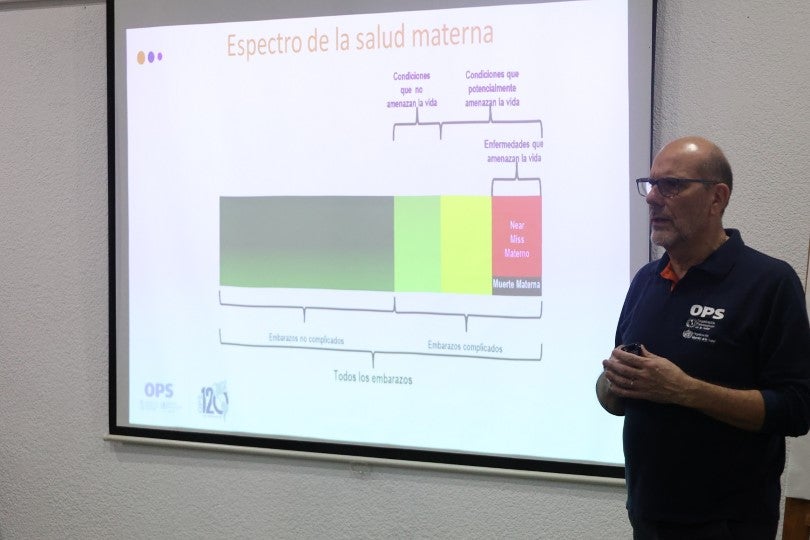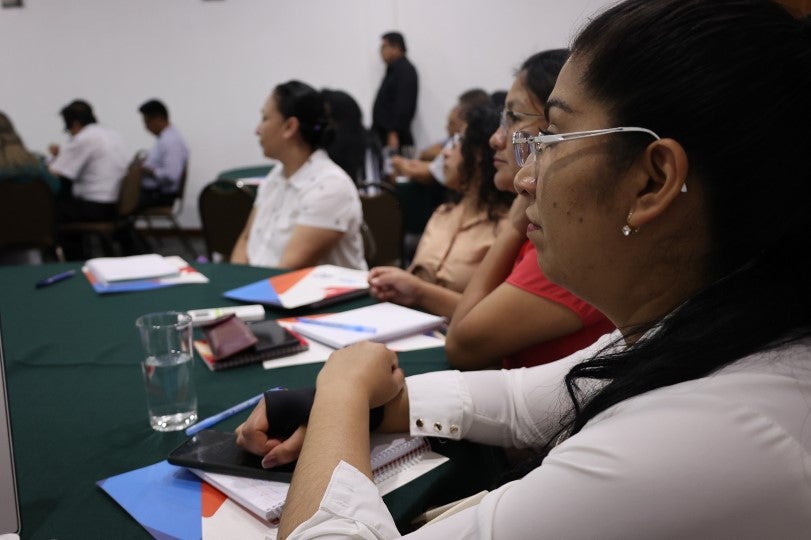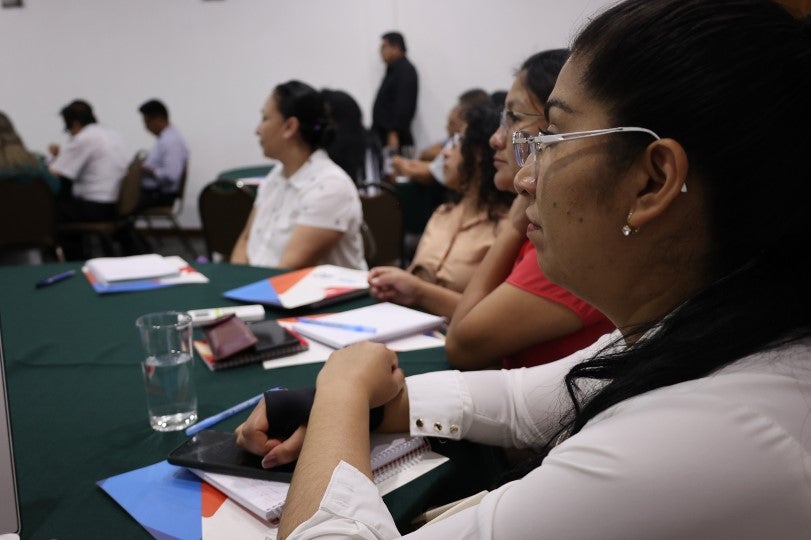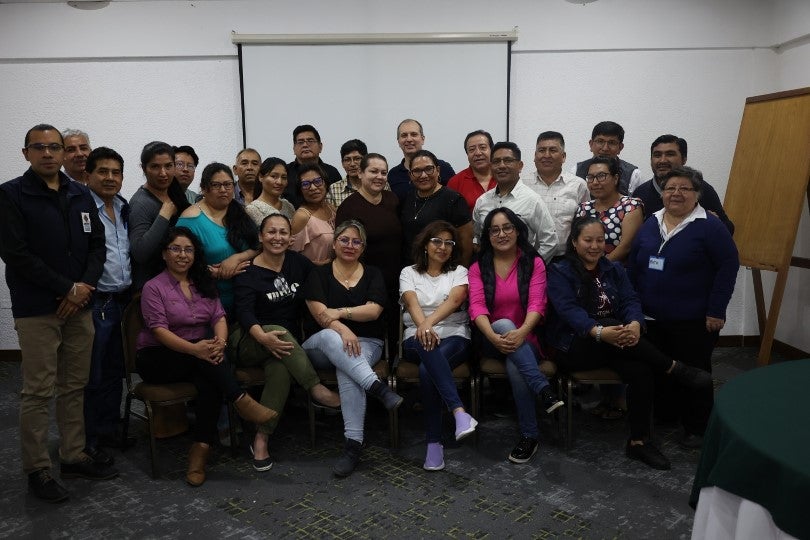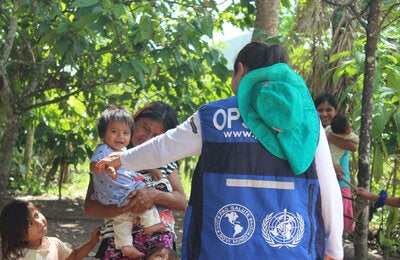
Santa Cruz de la Sierra, Bolivia, September 15, 2023 (PAHO)- Health professionals from the country's departments strengthened their capacities to improve prenatal care and identify risk prematurely, as well as improve their ability to discriminate between low and high risk, focusing on pathologies that put the lives of women and their children at risk, such as hypertensive disorders of pregnancy, diabetes, anaemias, severe infections and others.Workshop on improving prenatal care and high obstetric risk at the first and second level of care in Bolivia.
With the aim of contributing to quality care in the delivery of services to pregnant women, through the use of the risk approach, the workshop "Update on prenatal care and high obstetric risk in the first and second level of care" was held as part of the implementation of the project "Improving the health of women and adolescents in vulnerable situations", implemented by the Pan American Health Organization/World Health Organization (PAHO/WHO), thanks to funding from Global Affairs Canada.
The workshop was developed in coordination and with the participation of the Ministry of Health and Sports (MSyD). The workshop was facilitated by experts Bremen De Mucio, Claudio Sosa and Nicolas Martino from the Latin American Centre for Perinatology/Maternal and Reproductive Health (CLP/WR), a PAHO/WHO collaborating centre. The workshop took place from 11-13 September in Santa Cruz de la Sierra.
During the workshop, the concepts of risk, risk factors and harm were analysed. As well as the gradient of care, those at low risk are those with a low probability of suffering harm, and will therefore receive basic care, and those at high risk are those with a high probability of suffering harm, and will therefore receive special care.
CLP/W Regional Maternal Health Advisor, Dr. Bremen De Mucio, explained the rationale behind the risk approach: "Not all health problems are of equal importance. Not all populations have the same problems. Not all individuals have the same probability of being harmed," he said.
De Mucio also described how the Gestational Risk Classification System is conditioned by "the harm you want to predict, the number of risk factors you want to include, the relative value of each risk factor, and the risk levels you set".
The consultant pointed out the relationship between risk factors and harm: "Causal relationship, the risk factor is the trigger for the pathological process. For example, rubella in the 1st trimester and birth defects. Favourable relationship, when there is a clear connection between the risk factor and the harm, even if it is not the direct cause. Predictive or associative relationship in the statistical sense, when the relationship between the risk factor and the harm is not clear. For example, a woman with a history of fetal death has a higher risk of having another fetal death".
Dr. Claudio Sosa gave recommendations to make antenatal care a positive experience for pregnant women.
As background, he stated that "antenatal care is a cost-effective intervention that is widespread in the Americas. There is broad access in our continent reaching 90% (4 or more visits)".
"Despite this wide coverage, the final results are not acceptable: foetal death and/or maternal/neonatal morbidity and death," explained Sosa.
He also pointed out that there is an association in the manner of antenatal care, quality and lack of updating of interventions.
According to CLP, antenatal care is the care provided to women with the aim of preventing complications and reducing the incidence of perinatal and maternal morbidity and mortality. Care should be systematic, evidence-based and decision-making should be carried out between the patient and the health team.
The workshop was divided into lecture, discussion and plenary modules. The topics covered were: obstetric haemorrhages and maternal anaemia, haemorrhages during pregnancy given by Dr. Nicolás Martino and Metrorragias, as well as the diagnostic introduction of accretism, and concepts of anaemia in pregnancy given by Dr. Claudio Sosa.
The maternal pathology module covered hypertensive states of pregnancy, diagnosis of hypertensive states, hypertensive states of pregnancy, and prevention of pre-eclampsia/eclampsia syndrome.
Finally, the maternal pathology module covered urinary tract infection (asymptomatic bacteria, pyelonephritis and sepsis of urinary origin), concepts of preterm birth and prematurity.

